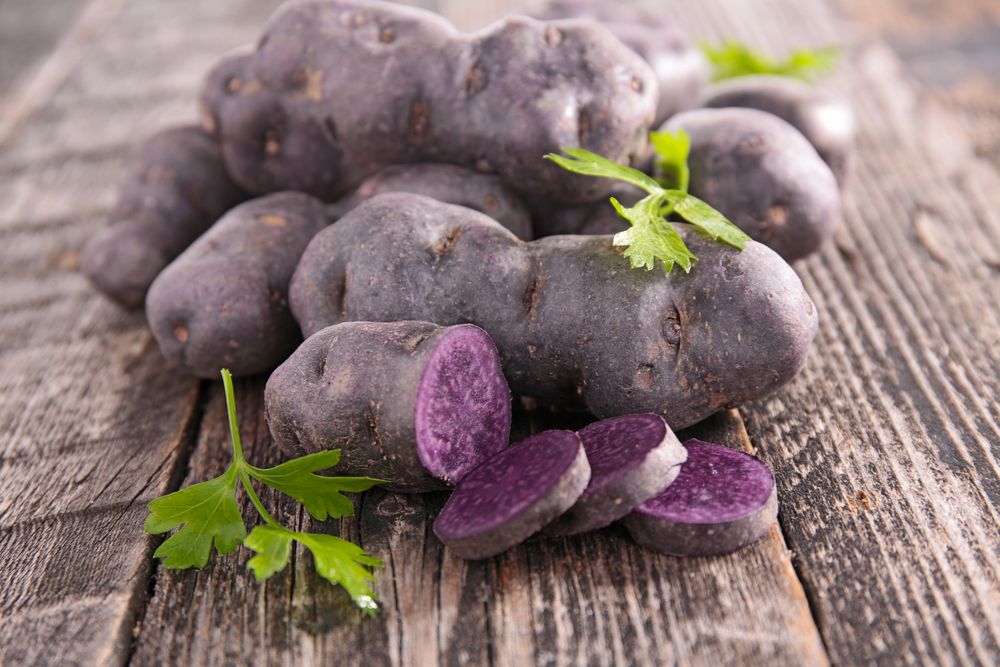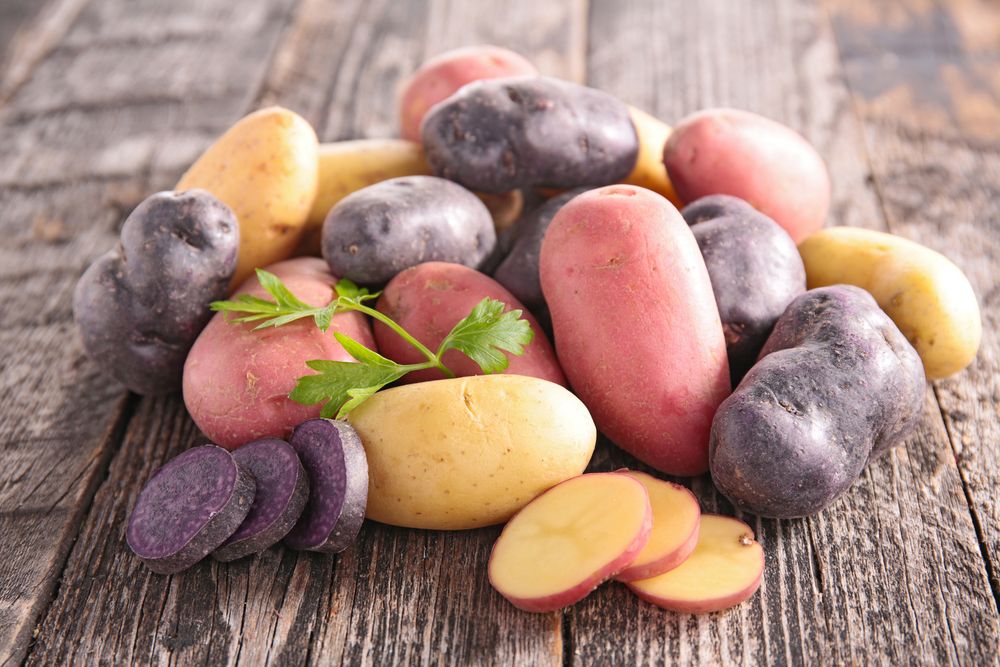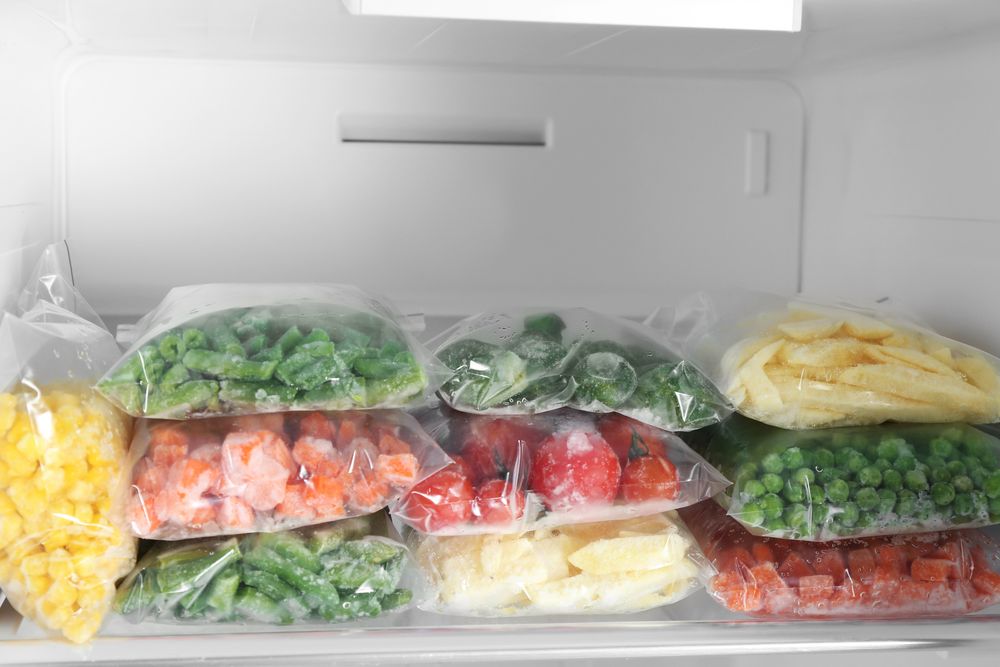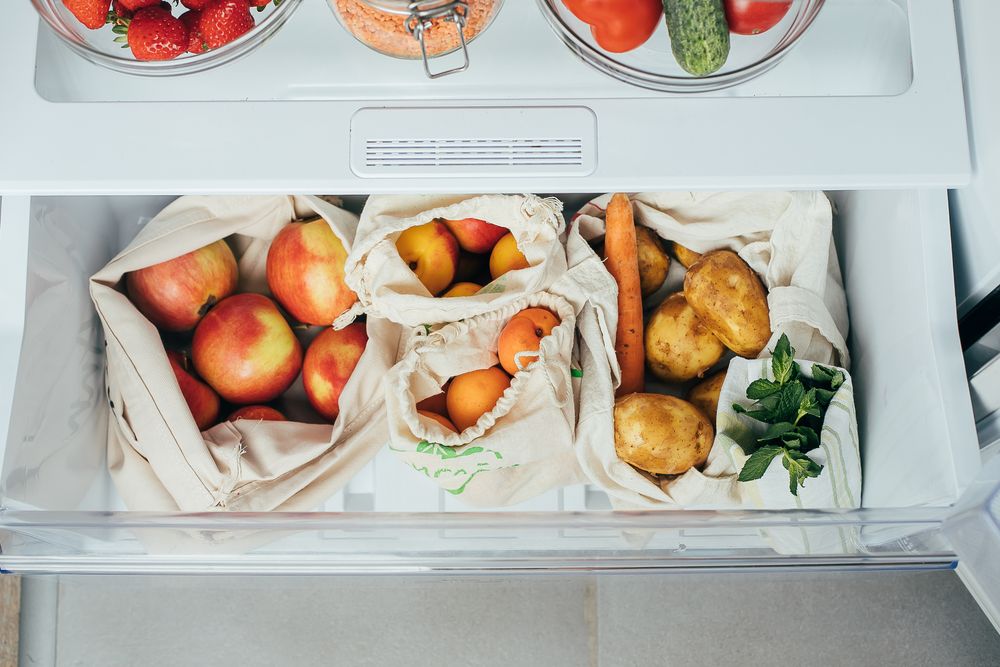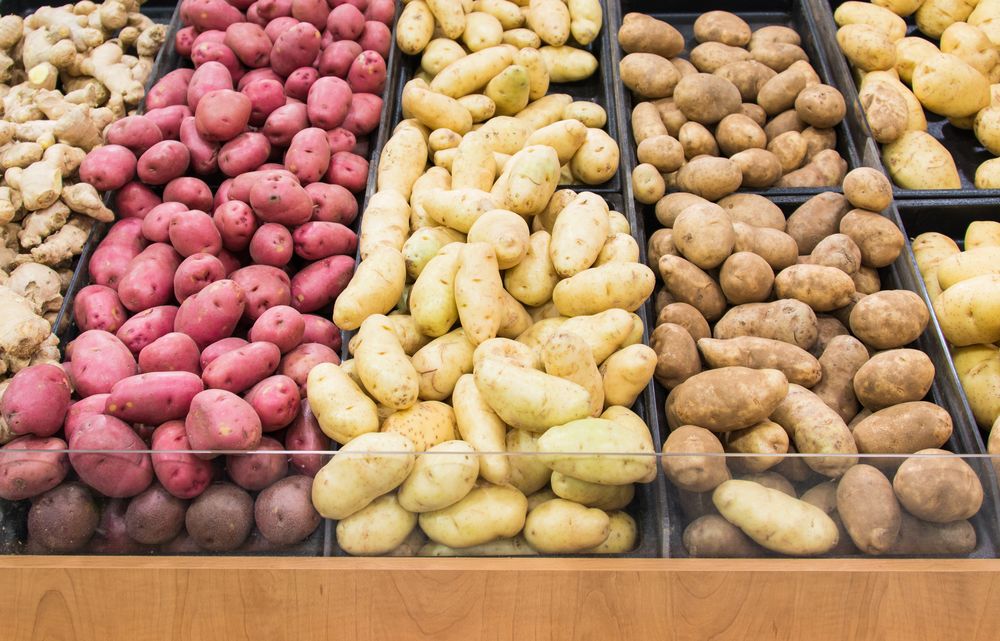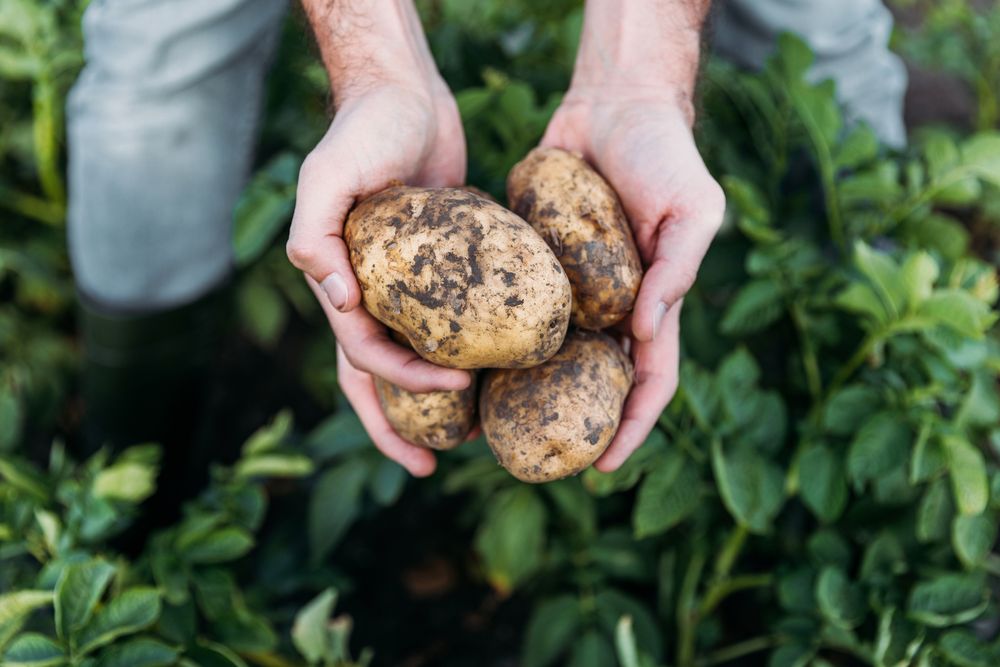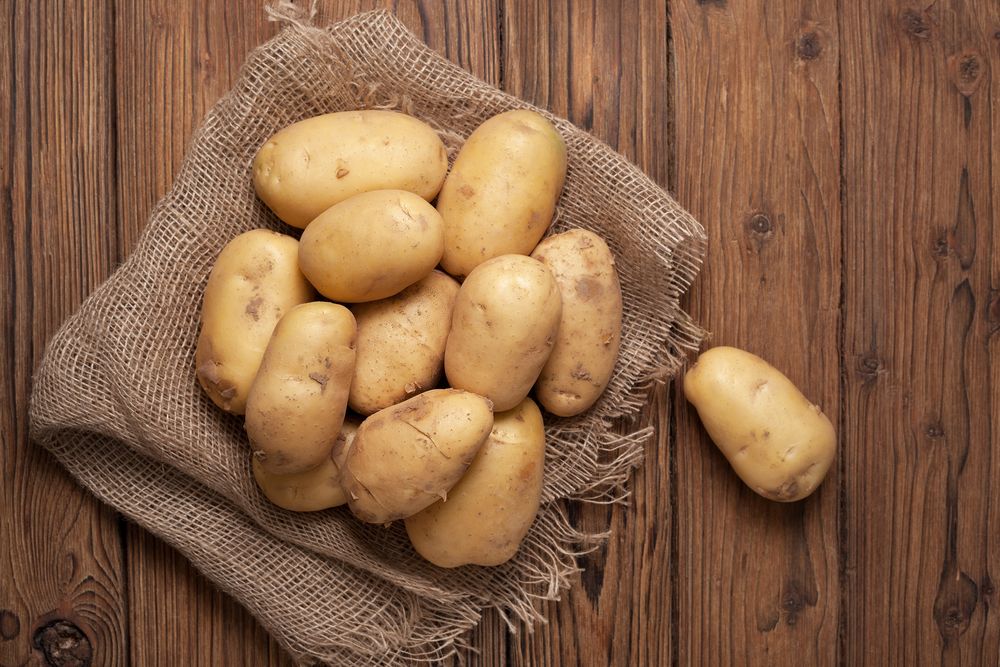How to Store Potatoes: Best Way to Store Potatoes Long Term
Potatoes are a versatile vegetable that you can use in many recipes. They are a good source of fiber, potassium, and Vitamin C. Plus, they are affordable and easy to store.
If you are looking for an easy way to add some fiber and nutrients to your diet, try incorporating potatoes into your meals. They can be boiled, mashed, roasted, or used in soups and stews.
And don’t forget about toppings! You can add cheese, bacon, sour cream, or other favorite toppings to make your potatoes even more delicious.
However, keeping potatoes stored for a longer period of time can be tricky if you don’t keep track of some general rules. For example, you should avoid storing potatoes with onions or fruit, as well as create the right temperature conditions.
Keep reading to discover the most common types of potatoes, together with the best tips and tricks for safely storing potatoes in the long run.
Types of Potatoes
There are many varieties, but you can group all potatoes into seven types: russet, red, yellow, white, blue, new, fingerling, and new. Here’s what you need to know about each:
Russet Potatoes
Russet potatoes have purple or brownish skin with white flesh inside. They hold their shape well, which makes them ideal for baking or frying but not mashing.
These potatoes have a rich, earthy flavor that works well when paired with herbs such as rosemary, thyme, and sage.
Red Potatoes
Red potatoes have red-skinned, pinkish ivory flesh that is dense and waxy. In contrast to russets, you can use them to create fluffy mashed potatoes without worrying that they will fall apart. Since they don’t absorb liquid, red potatoes hold their shape well during cooking.
Yellow Potatoes
Yellow potatoes have golden skin and moist, yellowish flesh that is creamy in texture. These potatoes aren’t good for frying but make great mashed potatoes or roasted whole with rosemary, thyme, and sage.
White Potatoes
White potatoes are pale with white-to-light-yellow flesh inside. This type of potato holds its shape when cooked, so it’s an excellent choice for scalloped or au gratin dishes.
However, the taste of white potatoes isn’t appealing on its own. So it’s best to serve them with strongly-flavored food like lamb stew or barbecued pulled pork rather than on their own as a side dish.
Blue Potatoes
Blue potatoes (also known as purple potatoes) have blue or lavender skin and flesh that is similar in texture to regular potatoes – only slightly starchier. These potatoes hold their shape well but tend to turn mushy if over-cooked.
They’re good for roasting, sautéing, steaming, and grilling due to their hardiness. Blue potatoes were originally cultivated by the Incas as far back as 4000 years ago and were introduced into Europe as early as 1616 AD.
New Potatoes
New potatoes are freshly harvested young potatoes that haven’t had time to fully convert their sugar into starch – so they remain sweet. The skin tends to be thin and papery at best, which allows the potatoes to quickly absorb flavors from other ingredients such as herbs, spices, and marinades.
People often mistake new potatoes for fingerlings. However, true fingerlings tend to be significantly larger and have thicker skin.
Fingerling Potatoes
Also known as creamer or boiling potatoes, fingerling potatoes are small with thin, waxy skins that vary in color from nearly black to bright red, depending on the variety.
They’re good roasted whole due to their firm texture and ability to retain flavor after cooking. But you can also safely boil or sauté fingerling potatoes since they won’t fall apart. In addition to being served as a side dish, these types of potatoes make great appetizers when stuffed with shrimp salad or herbed cheese.
How to Store Potatoes: Tips and Tricks
Check out the following tips for storing potatoes safely:
- Wash the potatoes in cold water, dry them off with a clean cloth, and then store them in a cool, dark place.
- Store new potatoes separately from mature potatoes since they produce ethylene gas.
- You should keep the temperature above freezing but below 50 degrees Fahrenheit (10 degrees Celsius) to avoid sprouting or shriveling of the potato’s skin. The ideal storage conditions at 45 degrees Fahrenheit (7.2 degrees Celsius) and 90% humidity.
- To avoid greening and sprouting, do not put your potatoes near fruits such as apples or bananas. These fruits produce ethylene gas, a ripening agent that speeds up potato decay.
- Avoid storing freshly cut potatoes next to uncut spuds; the spuds will emit a gas that hastens spoilage of the potatoes.
- When it comes to potato and onion storage, you should not keep these two together since they will spoil more rapidly.
- Another popular technique is to store potatoes in the dark with about 85 grams of table sugar per 8 pounds of potatoes to reduce their respiratory rate and keep them from sprouting.
- Put your unwashed potatoes into a paper bag and fold it over the opening to ensure that no air can enter. This allows the potato skin to slowly breathe while still inhibiting excess moisture loss.
- You can also store spuds in burlap bags – just leave them out in the open air overnight so that they get enough humidity to form protective skin. Then, put the potatoes into the bag with several inches of straw between each layer.
- Another option is to put potatoes into perforated plastic bags or containers (with ventilation holes); this allows any gases produced by the potatoes to escape while retaining moisture.
- If you’re growing your own potatoes but not planning to use them for a while, leave the vegetables in the ground until you need them.
- Storing potatoes in old buckets or other containers is also a great idea.
- One method is to simply place sprouted tubers into an open container with enough moisture to cover them; they will continue to grow but won’t spoil as quickly.
How to Store Potatoes Long-Term?
If you plan to store your potatoes long-term, the above methods will work to limit spoilage. However, if you’re wondering how to keep potatoes fresh for an even longer period of time, there are a few more steps you can take:
- Don’t wash or cut your spuds until you’re ready to use them.
- If you’re growing your own potatoes, leave them in the ground. This allows their skins to naturally seal themselves against moisture loss. Besides, insects are less likely to eat them. Do this even if winter is coming since the potatoes will last much longer outdoors than indoors.
- Be sure to dig up your spuds early enough so that they aren’t exposed to freezing temperatures (or even frost) for too long.
- After digging them up, don’t scrub the spuds. Just brush off any dirt and let them dry in the sun. Storing potatoes this way will also allow you to check their condition, and should they appear damaged or diseased, pull them out and get rid of them.
- If your potatoes are large, you can cut them into smaller pieces and make sure they dry completely before storage.
- If you are storing your spuds for several weeks, refrigeration is recommended. However, the potatoes should not be stored in the refrigerator crisper, as it may produce excess moisture and speed up decomposition.
- You can even store these spuds in an unused refrigerator, as long as the temperature stays above 50 degrees Fahrenheit (10 degrees Celsius).
- If you’re looking for an alternative storage method during the summer months when refrigeration is impossible, place the potatoes in a well-ventilated paper bag and keep it in a cool location away from sunlight.
- For longer-term storage (up to 3 months), keep your potatoes stored at 33 to 40 degrees Fahrenheit (1 to 4.4 degrees Celsius) with 90% humidity in a ventilated box or bag.
Potatoes FAQ
Learn more about how to safely store potatoes for a long amount of time.
How to store peeled potatoes?
The best way to keep peeled spuds fresh is to place them in water. If you use this technique, the potatoes will only stay fresh for up to 1 week.
How long do potatoes last?
If you’re wondering for how long are potatoes good for, you should know that they can last from 3 months to 1 year, as long as you store them properly (in the fridge or in a dark, cool location).
What’s the best way to store potatoes?
The best potato place is a dry, dark area away from sunlight and high heat. The kitchen pantry is typically the best location, but you can also store the potatoes in your refrigerator if you plan on using them much later.
How to store potatoes in the fridge?
The best way to keep your potatoes fresh in the fridge is by using plastic bags or containers with ventilation holes; this allows any gases produced by the spuds to escape.
When are potatoes bad?
If you notice that your potatoes have started to sprout or grow eyes, they are most likely rotten and should be thrown away. Also, if the flesh has become greenish in color (or any other color besides dull white), it means that your spuds are decaying, so it’s time to get rid of them.
What is a potato storage bin?
A potato storage bin is a special container made from spruce wood. It allows good ventilation and drainage so that the potatoes can breathe without getting moldy.
If you opt for this potato storage idea, you need to regularly check the moisture level inside the container and keep it around 65%. It’s also wise to replace your potato bin every 5 years.
How to store sweet potatoes?
If you want to store sweet potatoes, make sure they are completely cooled down before placing them in the fridge. You should also check if there is any mold on the spuds (shouldn’t be larger than 1 inch in diameter) and get rid of it immediately.
Can you freeze potatoes?
Yes, you can freeze potatoes to enjoy them all year long. However, you should know that the potato texture will never be the same as before freezing. It’s best to grease the potatoes with a thin coat of sunflower oil before freezing them in a Ziploc bag. You can learn more about freezing potatoes by checking out our in-depth guide.
Why are my potatoes green?
The most common reason why potatoes turn green is overexposure to light and not enough time in the dark. Green potatoes are usually quite bitter, so you should throw them away.
How to can potatoes?
Cook the potatoes until they’re soft enough to eat. Then, pack them into the jars and add a teaspoon of salt for every liter of potatoes. Now, fill the jars with boiling water and seal them properly. Finally, store your canned spuds away from sunlight for up to 1 year.
What’s a potato keeper?
A potato keeper is a special box made from spruce wood that allows good ventilation and drainage so that the potatoes can breathe without getting moldy. This potato storage idea allows you to keep your spuds for up to 6 months.
How long do cooked potatoes last in the fridge?
Cooked potatoes can last up to 1 week in the fridge. Make sure you place them in a covered container and store them at a temperature lower than 40 degrees Fahrenheit (4.5 degrees Celsius).
How to store cut potatoes?
The best way to store cut potatoes is to get rid of their excess water. First, blot the slices with a clean kitchen towel or paper towels to absorb the moisture. Then, place the slices in a container and cover them with plastic wrap. Put your container in the fridge for up to 3 days.
Why do potatoes sprout?
One of the main reasons why potatoes sprout is that they aren’t stored properly. If your potatoes are exposed to light or stored in a warm place, they will start to grow.
So, if you’re wondering how to keep potatoes from sprouting, just move them to a cool, dark location. It’s best to check the signs of potato decay as well and discard those rotten spuds.
How long do russet potatoes last?
Russet potatoes can last up to 6 months if they are properly stored. Make sure to keep them in a dark, dry place at a temperature lower than 40 degrees Fahrenheit (4.5 degrees Celsius).
How long do red potatoes last?
Red potatoes usually last up to 2 weeks. However, you should place them in a covered container with enough room for ventilation and make sure they don’t get too moist.
How to keep potatoes from turning brown?
One of the best ways to prevent potatoes from turning brown is to get rid of their excess water after cutting them. Blot the slices with a clean kitchen towel or paper towels to absorb the moisture. Then, place the slices in a container and cover them with plastic wrap.
How to cure potatoes?
You can cure potatoes by putting them in a pan and covering them with water. Leave the spuds overnight so they can rehydrate. In the morning, drain the water and dry the potatoes with a clean kitchen towel.
How to store baked potatoes?
You should serve baked potatoes as soon as possible, so it’s best not to fold them up and put them in the fridge. However, if you can’t eat the spuds right away, make sure they are dry and store them away from sunlight.
How to store mashed potatoes?
Mashed potatoes are best used within 3 to 4 days, so make sure you cover them with plastic wrap and store them in an airtight container.
Why are my potatoes soft?
If your potatoes are too old, they will become soft. It’s best to use potatoes with wrinkles, which are younger. If the spuds are too old, you can bake them in the oven or in a pot of boiling water to make them more firm.
How long are potatoes good for after boiling?
If you boiled your spuds, don’t keep them in the fridge for more than 3 days. Otherwise, you’ll have to throw them away, as they will become moldy.
Should potatoes be washed before they’re stored?
No. You need to wash your spuds only before you cook them. Washing them beforehand can actually contribute to early spoilage since it strips away the potato skins, which will cause greater moisture loss and accelerate rot.
Do I have to refrigerate potatoes after I bring them home from the grocery store?
No. Even when they come out of your shopping bag at room temperature, fresh-purchased potatoes should be fine unless you live in a tropical climate where temperatures often exceed 80 degrees Fahrenheit (26.7 degrees Celsius).
Final Thoughts on Potato Storage
Potatoes can last for a long time in the proper storage conditions. So make sure to follow our instructions above and you shouldn’t have any trouble trying to enjoy your favorite potato-based meals.
What are your favorite tips and tricks for safely storing potatoes for a longer time? Let us know in the comment section below!
